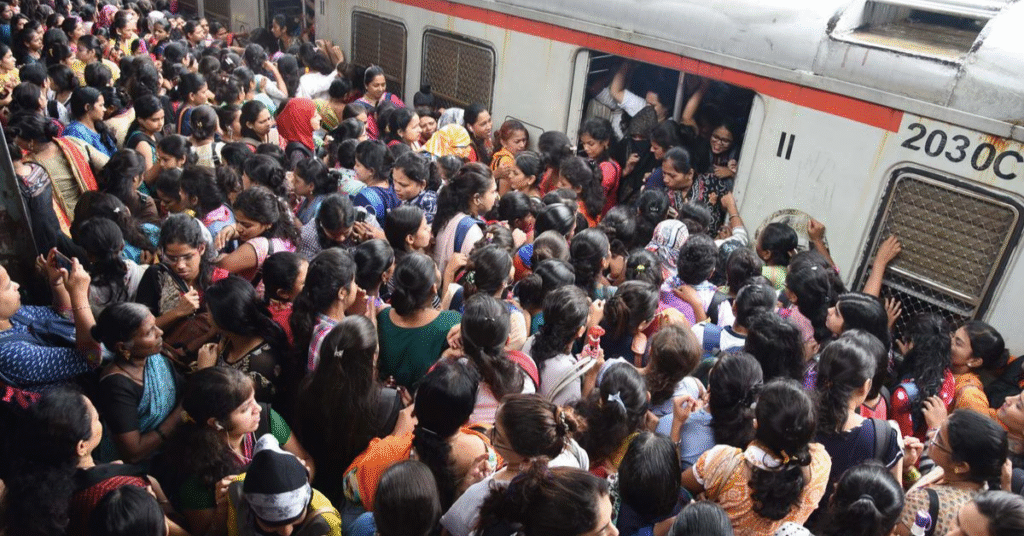🚇 What Happened in Thane?
On June 9, 2025, a tragic accident shook Mumbai’s suburban network when an overcrowded Thane-bound local train between Diva and Mumbra stations jolted through a sharp curve. Commuters clinging to open doors and footboards collided, causing at least 13 passengers to fall off, with 4–5 confirmed dead and several others critically injured.
More distressing details emerged:
- Victims, including a 23-year-old employee, were hospitalized in critical condition.
- Families and public figures accused over-crowding due to lack of long-distance and AC local trains.
Videos circulating on social platforms captured the moment of chaos, drawing emotional public response.
🏛️ Legal Responsibility: Who’s At Fault?
- Railway Authority & Local Administration:
Indian Railways is mandated by law to ensure commuter safety under the Railway Act, 1989. Overcrowding and lack of automatic doors may constitute breaches of this duty. - Right to Life Under Article 21:
Fatalities due to unsafe conditions could be seen as violations of the right to life, protected under Article 21 of the Constitution. - Potential Legal Action:
Families may pursue:- Civil compensation claims for wrongful death and injury.
- Public Interest Litigations (PILs) demanding court orders for enhanced passenger safety.
- Investigations under sections related to negligence, including Indian Penal Code 304A (death by negligence).
- Calls for Accountability:
A probe has been ordered at both state and railways level. Opposition leaders are demanding the resignation of Minister Ashwini Vaishnaw, citing infrastructure neglect and migrant influx.
🛡️ Immediate Legal and Safety Reforms
In a swift response to the accident, authorities have:
- Announced installation of automatic door systems in existing and new non-AC local trains in Mumbai by January 2026.
- Approved new non-AC coaches with improved ventilation and safety design by November 2025.
- Debated the reduction of migrant passenger surge, and called for an expansion of AC and long-route train services.
🎙️ Public Outcry and Political Pressure
Social media and comforted families are demanding:
- #JusticeForPassengers and stricter punishment for officials if negligence is proved.
- Financial compensation: While the state has announced INR 5 lakh for deceased families, opposition demands INR 25 lakh.
Political responses have varied:
- CM Devendra Fadnavis termed the Mumbai local train accident “unfortunate” and pledged an investigation.
- Opposition figures like Rahul Gandhi and Sharad Pawar called for infrastructure accountability and system overhaul.

👁️🗨️ Analysis: Why This Kept Happening
The tragedy highlights persistent issues:
- Rampant overcrowding in Mumbai local trains. On average, 4,500 passengers cram into rakes meant for 2,000.
- Open-door trains without automatic closure systems, allowing passengers to dangerously hang off.
- Frequent curve-junction collisions between trains, increasing fall risks.
Historical incidents like the 2017 Elphinstone stampede and 2024 Mumbai stampede similarly stemmed from overcrowding and systemic neglect.
✔️ Legal Recourse for Affected Families
Families of victims can file:
- Civil claims for loss of life and medical costs under tort law.
- A PIL to demand systemic safety reforms from courts.
- Seek criminal proceedings for negligence under IPC 304A.
- Engage with government schemes for compensation and welfare support.
📝 Key Takeaways
- The Thane train tragedy highlights a legal crisis in urban public transport safety.
- Swift infrastructural upgrades and legal actions are underway, but broader systemic change is overdue.
For six million commuters daily, legal reforms must translate into safer, accessible travel.
To read more Indian Laws, visit Legal Guide India



